Hello again!
Having posted a handful of night-time images from the grounds of Dölitz Depot in this entry, I was able to shoot an additional set of images in daylight, and would like to share these with you.
This tram depot opposite the "agra" exhibition centre primarily used for national agricultural exhibitions in the GDR era was originally built and operated by LVB's predecessor GLSt (Große Leipziger Straßenbahn AG), and was first opened in 1900. Originally comprising only two car sheds, the depot was extended with an open stabling area in 1984, and closed for extensive renovation and modernisation works on 30 September, 2013.
With this project now completed, Dölitz went back on line on 23 July this year. Technically, the depot was broadly outfitted like Angerbrücke, now being equipped with an electronic signalling and routing suite which can be either remotely controlled from Angerbrücke during those hours when no supervisor is present locally, or from the local supervision office.

Low environmental impact was one key element of the refurbishment programme, meaning the depot facilities recycle as much water as possible and also collect rain water for cleaning purposes. Furthermore, the depot was designed as a precipitation catchment zone in order to assist in preventing flash floods following severe weather events.
The building in the background contains the depot workshops and tram washing facility, while the asphalted surface serves as a reversing zone for buses as well as a stabling area for fire brigades.
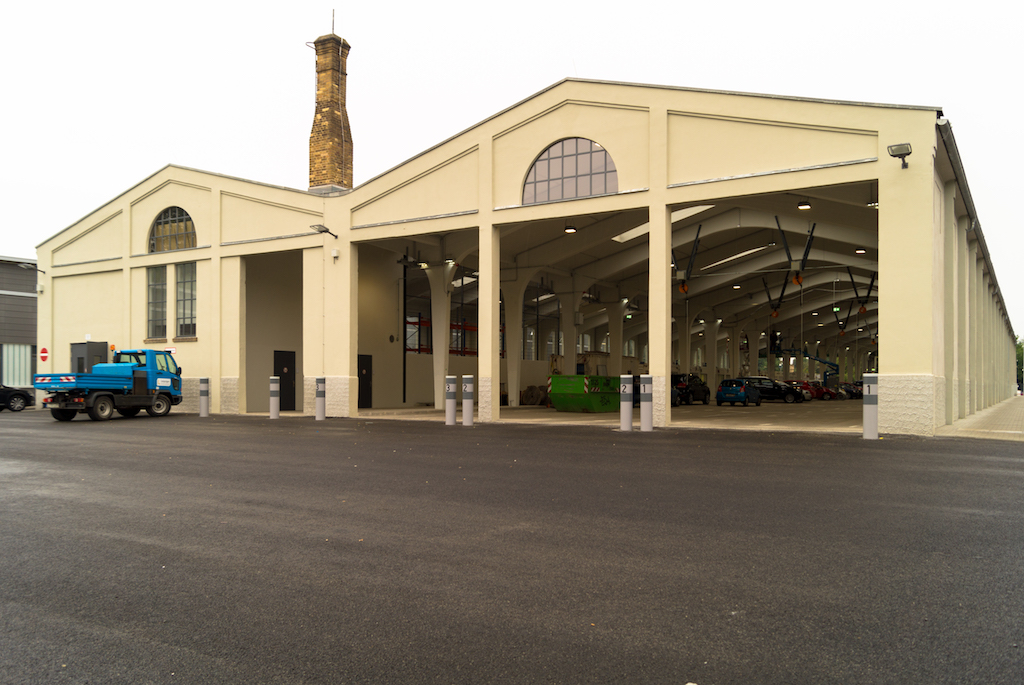
The newer of the two car sheds originally existing on the depot grounds could be retained and renovated completely. This shed, built in 1912, will serve as a sheltered stabling area for buses which will be based here in the not too distant future, as well as for staff parking spaces.
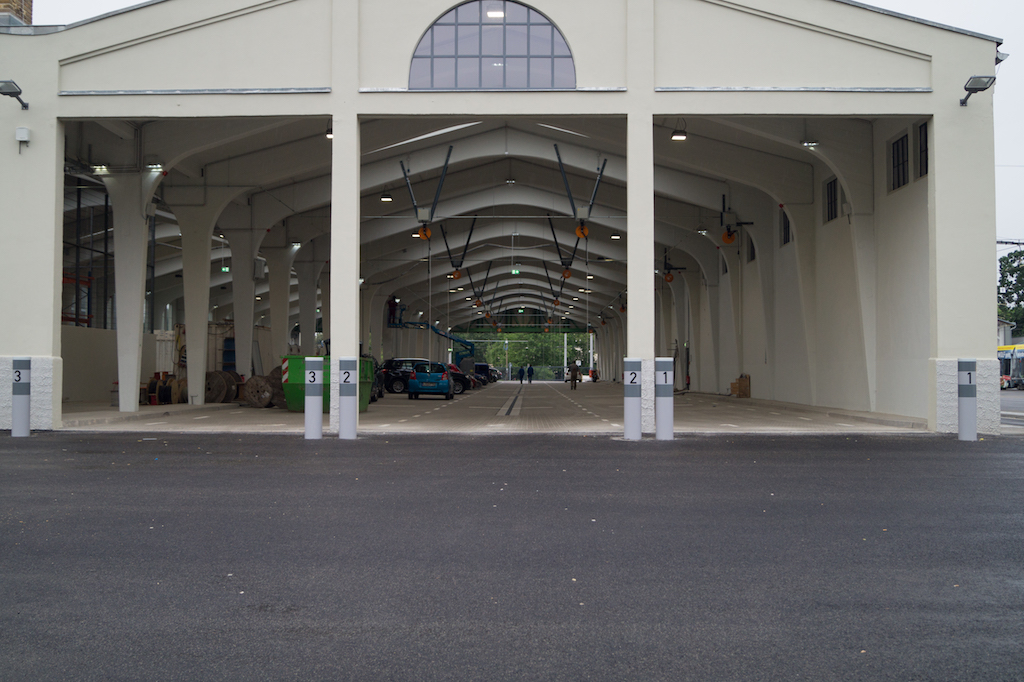
Staff parking is currently possible only in the future bus stabling area for as long as the office containers remain in place for the engineering companies still present for follow-up and finishing works.
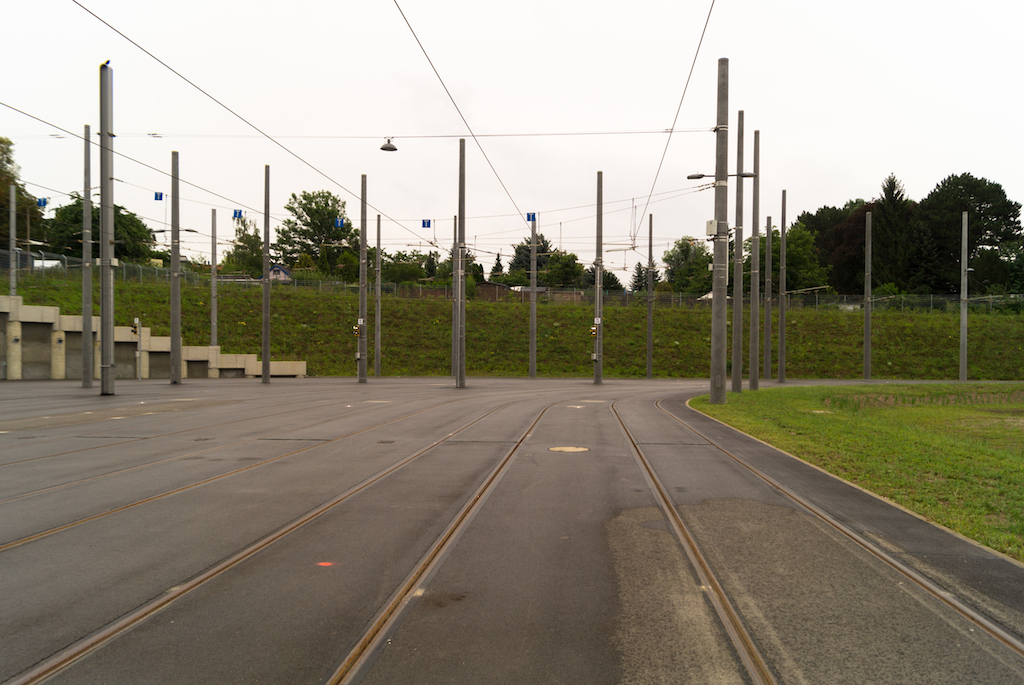
Trams are stabled on this open surface on the north side of the depot area.
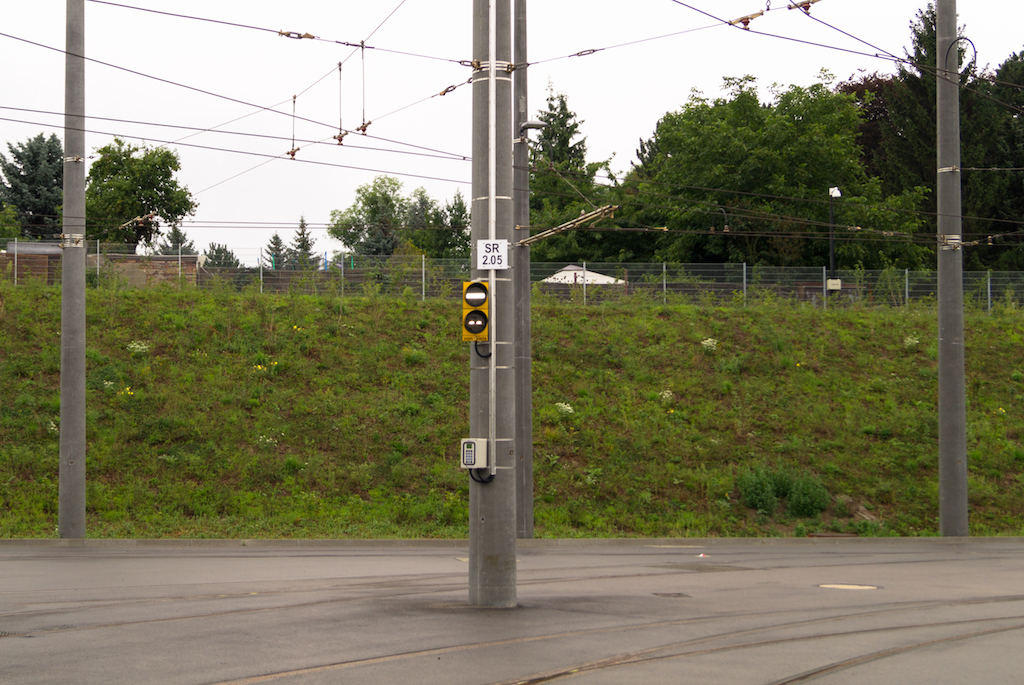
Due to the computerised routing suite, shunting paths need to be requested by keypads such as this example on Signal SR 2.05.

The ingress track passes the workshops on the depot's southern rim.
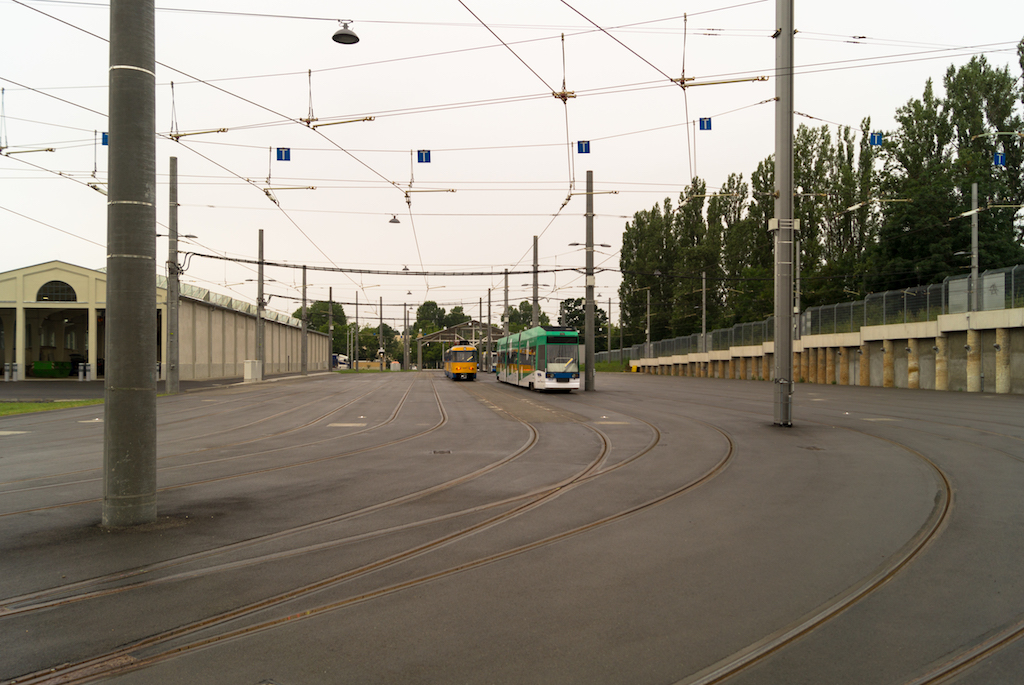
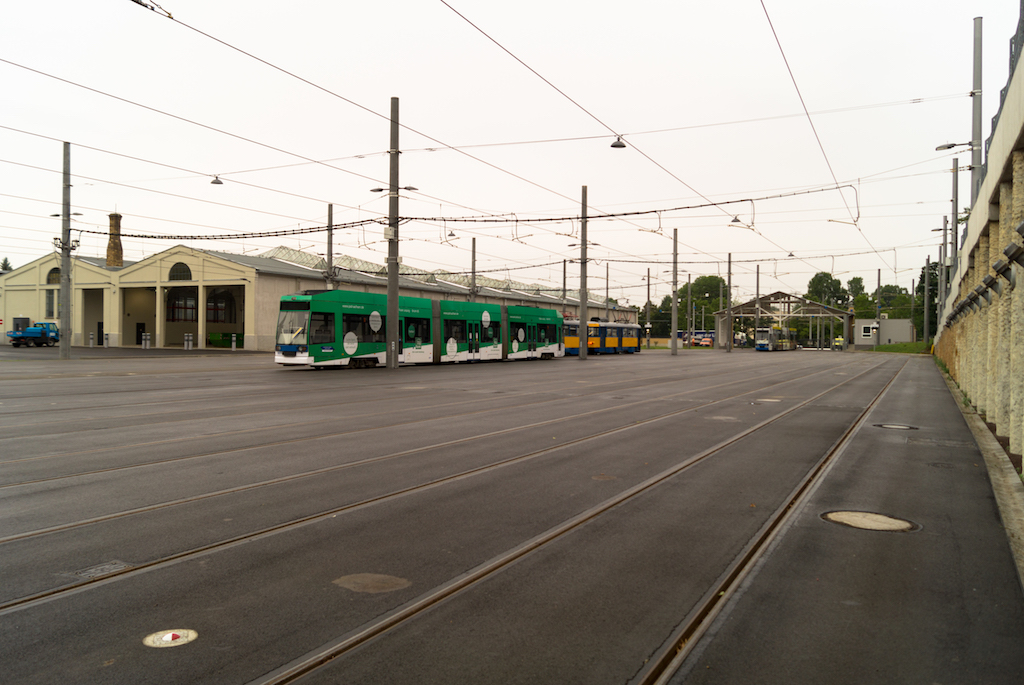
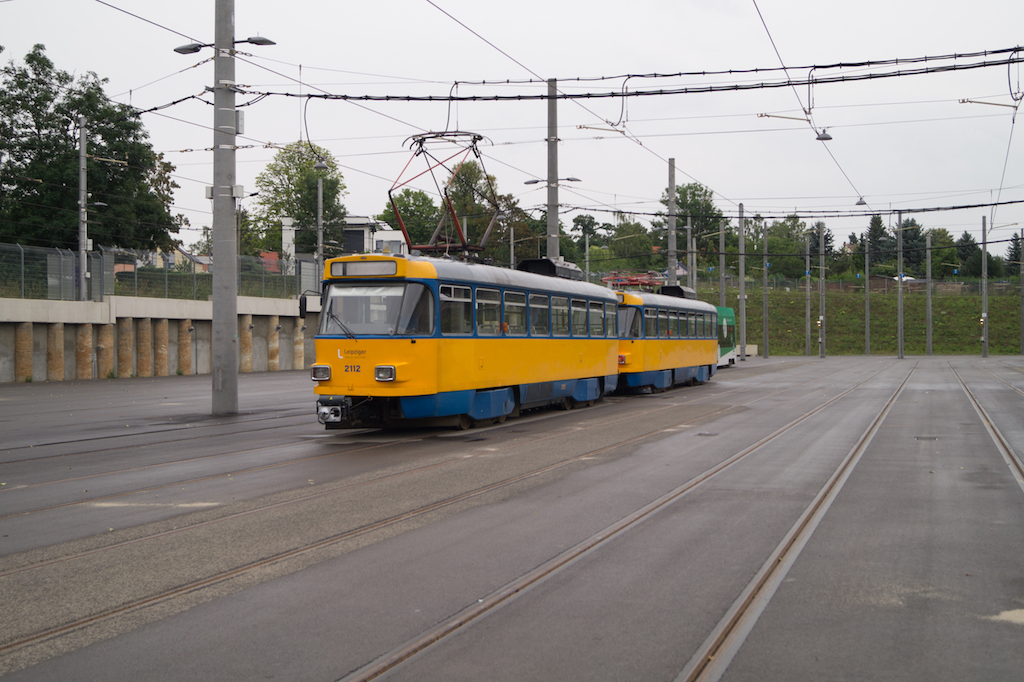
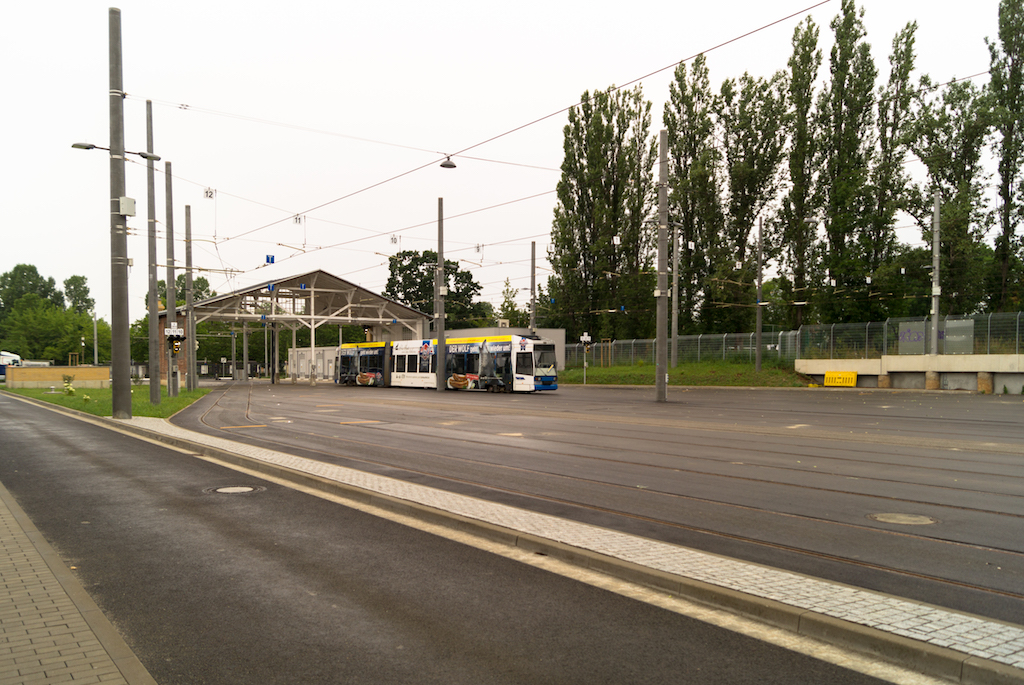
A couple of wide views of the tram stabling area which comprises twelve tracks.
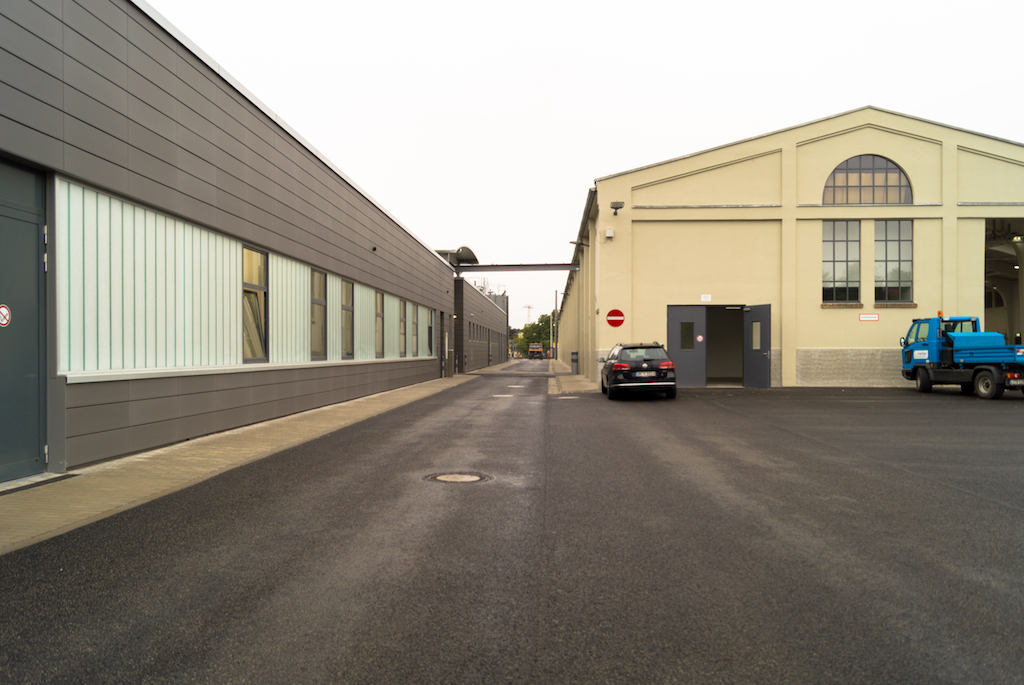
The passage for buses and personal cars between the workshops and the parking shed.

The standard procedure for depot returns as well as turnaround movements for Line 11E services terminating at Dölitz is to ingress the depot on Track 15 and proceed to Signal S 2.02. Returning services will then be assigned a target track and may proceed only as soon as the signal shows F 1 with the corresponding track number. Meanwhile, Line 11E services usually loop back through Track 6.
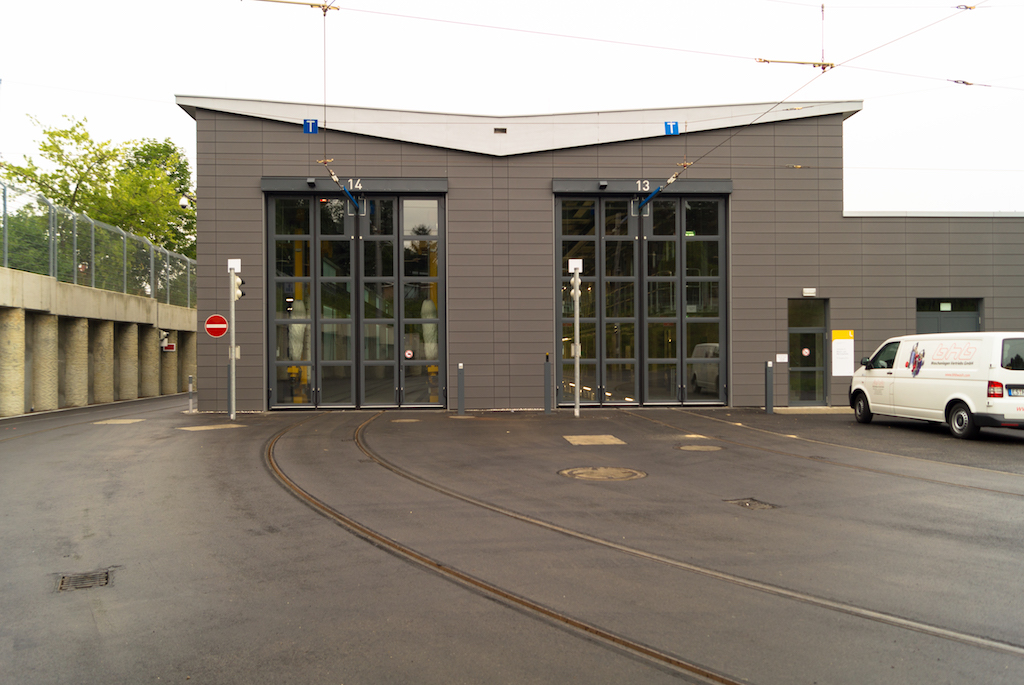
Returning trams can also be routed directly into the workshops if required for servicing and washing, with these tracks numbered 13 and 14.

Depot sorties require route requests in a very similar way to the procedure at Angerbrücke. While moving slowly onto the starting line on the respective track, drivers need to press the point setting button for Left in order to sortie for Markkleeberg, or Right for citybound sorties. Acknowledgment will then be provided with the "A" chamber for the relevant track lighting up. As soon as the requested route has been set, the signal underneath will show F 1 plus the track number from which the sortie has been cleared. Multiple sorties from the same track are not permitted, meaning each individual tram must carry out a separate route request.
Note the route request keypad also required for shunting.
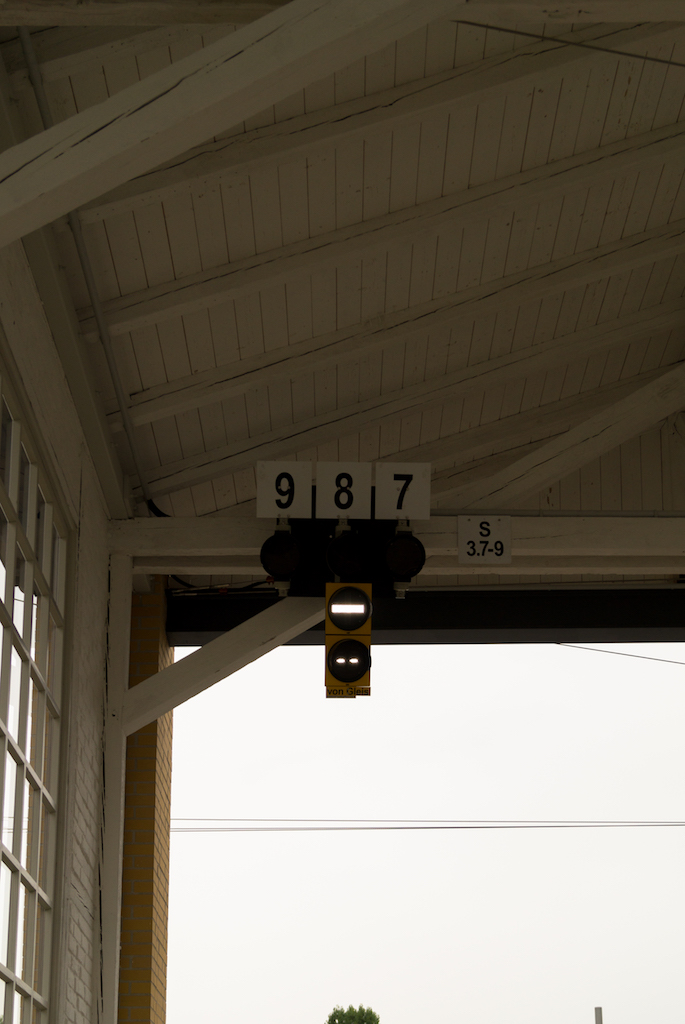
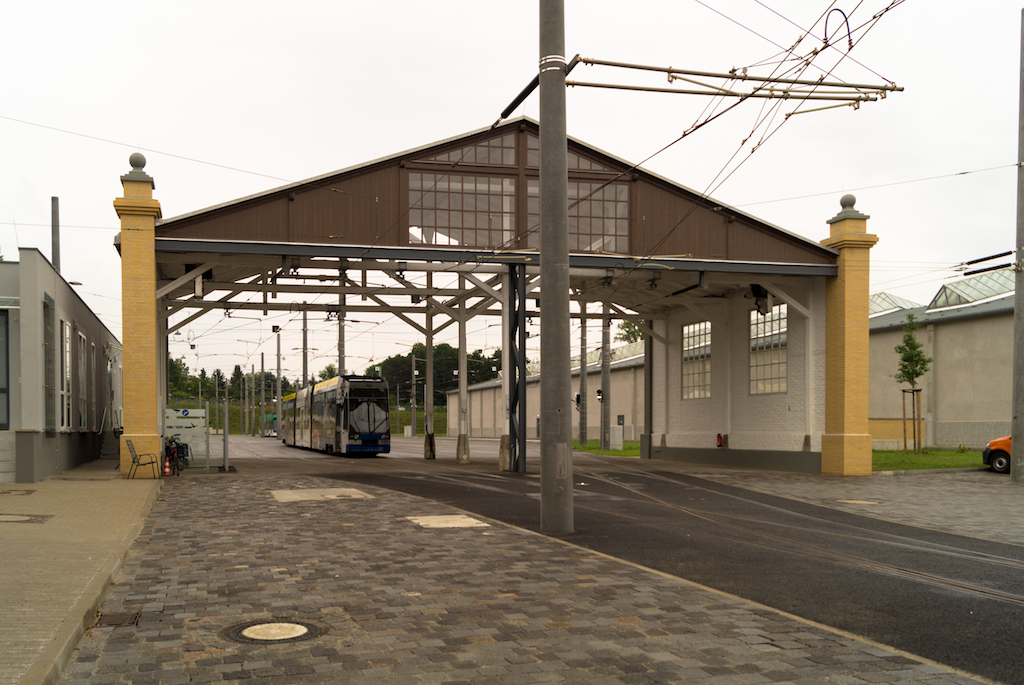
This is the portico of the original tram shed from 1900 which has been retained in the sortie zone. It has been moved north from the shed's original location by several metres, as the sheds were originally set immediately side by side.
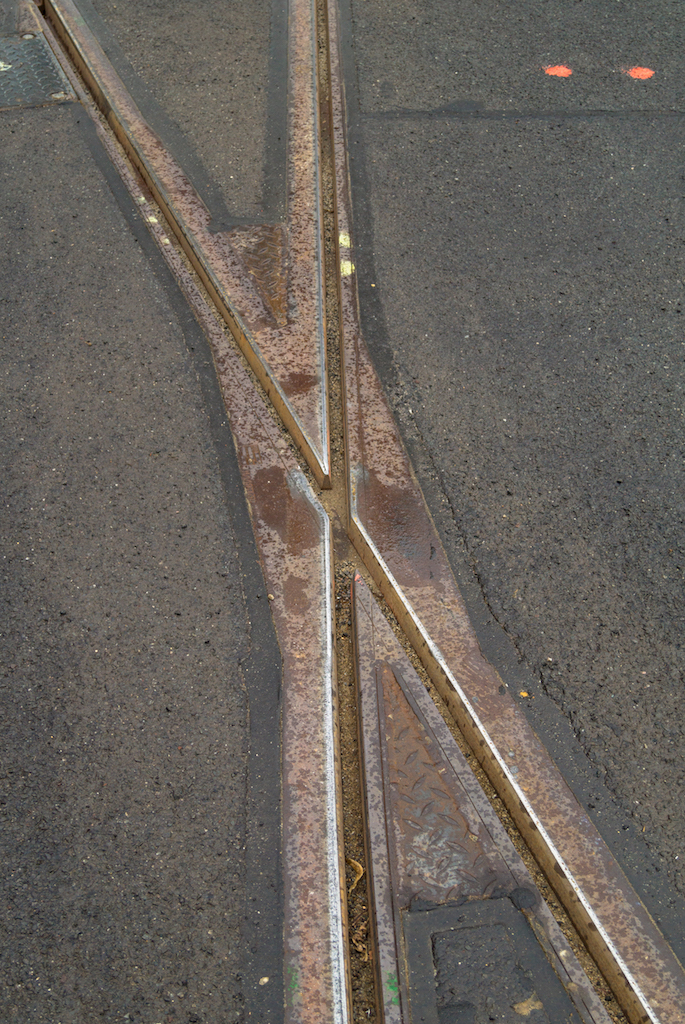
Points in the depot area are generally designed with deep-grooved common crossings as the wheelsets on our tram fleet such as it exists today are equipped with sufficiently wide tyres to permit moving away from flange-bearing points. I understand that unless specific reasons exist for retaining flange-bearing common crossings locally, points which need to be replaced for any possible reason will be exchanged for deep-grooved varieties.
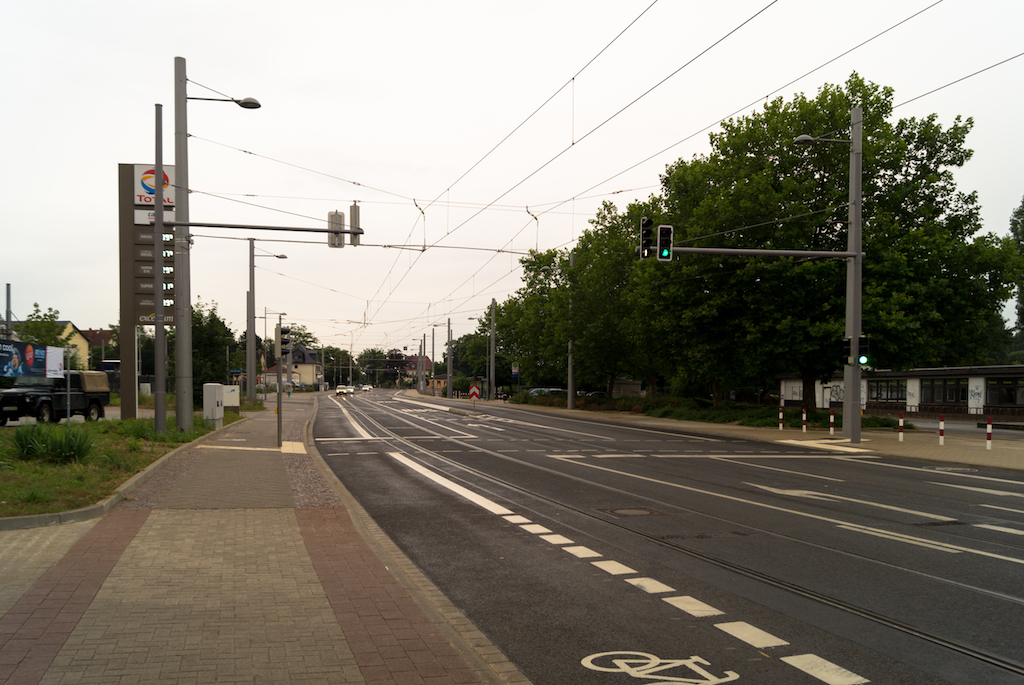
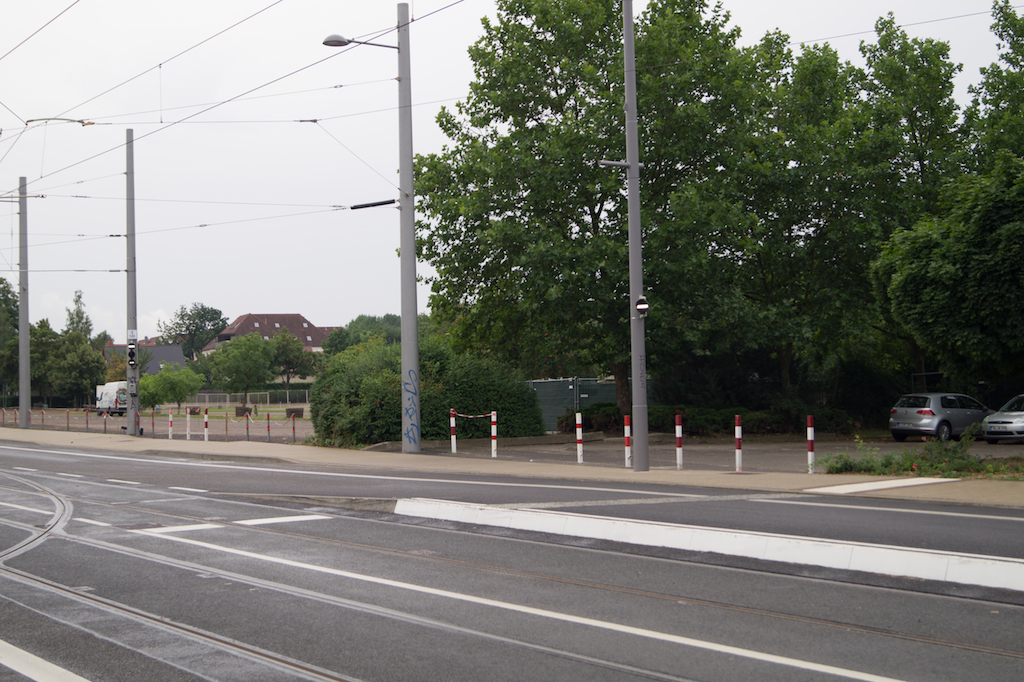
The track section on Bornaische Straße in the area immediately outside the depot grounds is also part of the electronic routing suite.

Southbound services – whether proceeding to Markkleeberg on Line 11 or returning – as well as citybound services at the Am Eichwinkel stop seen in the background just off the house with cars parked in front – need to observe two signals following each other closely. For southbound services, Signals S 3.14 and 1.03 need to show F 1 (as 3.14 is doing in this photo), with 1.03 also needing to show the track number 92. For services coming from the city and entering the depot, the signal needs to show F 5 (a triangle on its tip) with track numbers 13 or 14 for the workshops, or 15 for a direct ingress.
Northbound Line 11 services require that Signals S 1.02 and 3.16 show F 1, with 1.02 also needing to show the track number 91. Returning services will be shown F 5 plus track numbers 13, 14 or 15 on 1.02, as previously described.
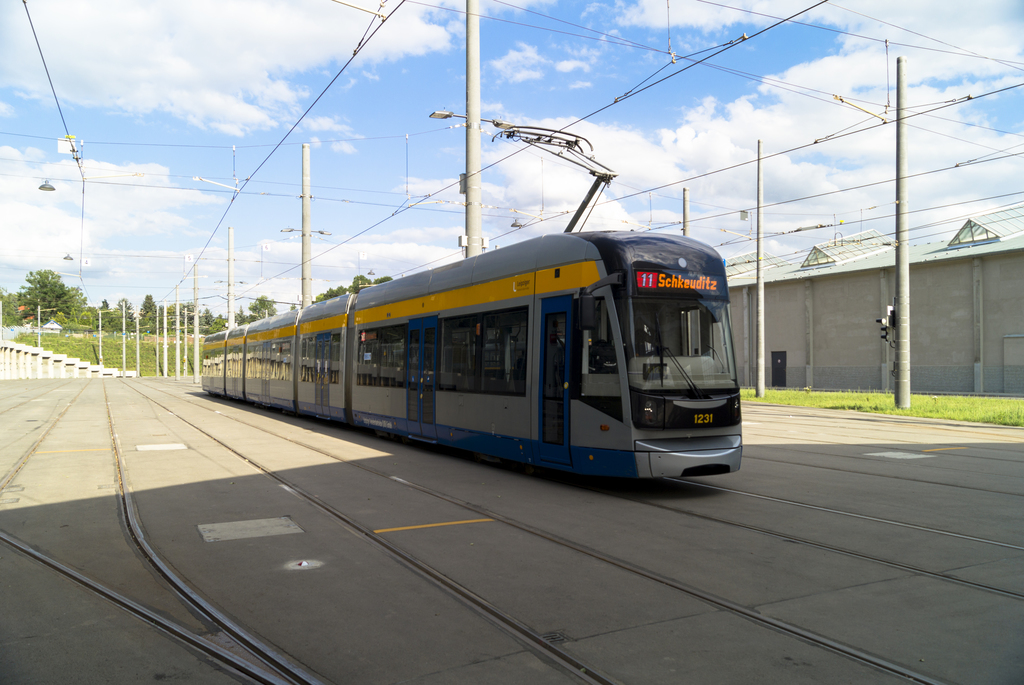
And this was 1231 "Bielefeld" at Dölitz this Tuesday during the dwell time upon having arrived on Line 11E.
Thanks for reading! ![]()
-
 4
4




3 Comments
Recommended Comments
Create an account or sign in to comment
You need to be a member in order to leave a comment
Create an account
Sign up for a new account in our community. It's easy!
Register a new accountSign in
Already have an account? Sign in here.
Sign In Now